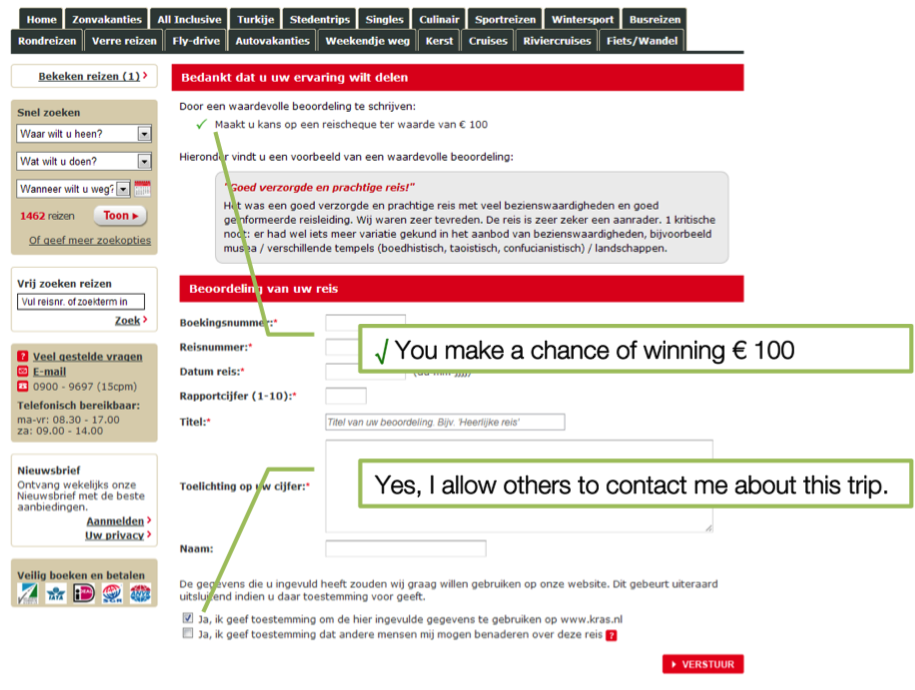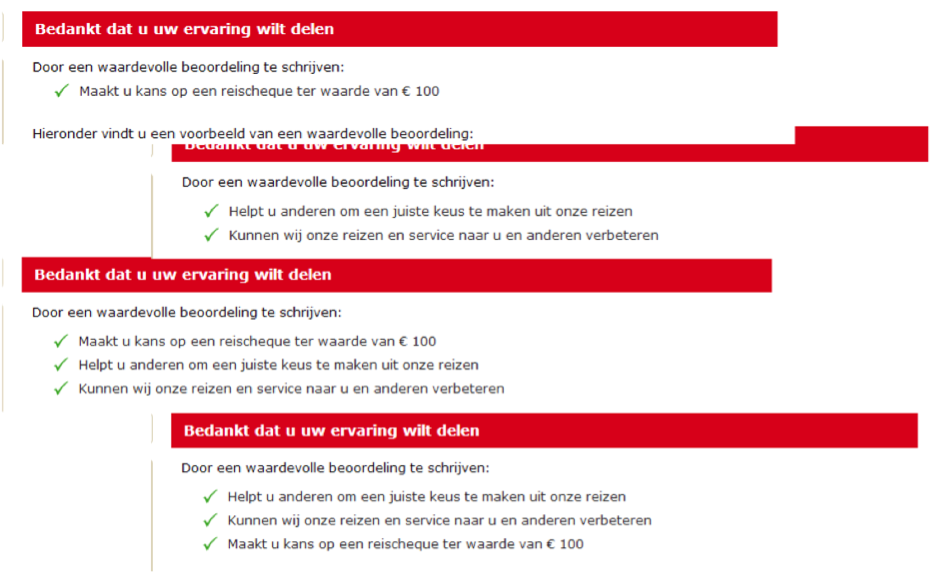“Money kills motivation in a social setting”
 You want to motivate your customer to buy. Does it help to give a monetary reward? Of course, but… sure not always!
You want to motivate your customer to buy. Does it help to give a monetary reward? Of course, but… sure not always!
An important aspect of motivation is rooted in the huge difference between so-called monetary markets versus social markets. In a monetary market monetary rewards determine our motivations and behaviour, whereas in a social market we are ruled by social rewards (which are way more intrinsic than the extrinsic monetary rewards).
So is Money Omission a true persuasion technique? Probably not, but I do hope to prevent some greedy marketers to make the classic and expensive mistake of using money as a motivator in a social setting.
Money kills social
Monetary and social rewards work totally different and often opposite to each other in terms of motivation. The two can actually hardly ever exist together. Imagine for example that your kids attend day care and that you now and then pick up your child too late. That bothers the day care employees since they have a family at home too. Therefore they decide to introduce a fine of $10 per 15 minutes. What will happen? Chances are that you and other parents will see the fine as a monetary contract. It’s a “fee for lateness”. Therefore you stop feeling guilty when you’re late (‘hey, I’m paying you!’), and you’ll arrive late more often.
Scientific Example
Imagine you need someone to help loading a sofa into your van. What’s your best option?
- Just ask someone
- Just ask AND offer him/her a candy
- Just ask AND offer him/her a candy AND mentioning it’s worth $0,50
- Just ask AND offer him/her $0,50
 As James Heyman and Dan Ariely (2004) found out, the first 2 options are your best bet (and it doesn’t matter if you just ask, or ask and offer a candy)! To be more precise. They found that the one thing you should not do is adding money to the equation. Asking and offering $0,50 works way less to boost someone’s willingness to help than just asking (and offering a candy). But even worse: When you offer a candy, DO NOT mention the monetary value of the candy! That significantly dropped people’s willingness to help. And although they only measured ‘willingness to help’ and not real behaviour in this experiment, they did repeat the results with behavioural measures in 2 other experiments within the same study: a) Physical effort dragging balls on a computer screen and b) Mental effort solving arithmetic puzzles. The results were the same. So in short:
As James Heyman and Dan Ariely (2004) found out, the first 2 options are your best bet (and it doesn’t matter if you just ask, or ask and offer a candy)! To be more precise. They found that the one thing you should not do is adding money to the equation. Asking and offering $0,50 works way less to boost someone’s willingness to help than just asking (and offering a candy). But even worse: When you offer a candy, DO NOT mention the monetary value of the candy! That significantly dropped people’s willingness to help. And although they only measured ‘willingness to help’ and not real behaviour in this experiment, they did repeat the results with behavioural measures in 2 other experiments within the same study: a) Physical effort dragging balls on a computer screen and b) Mental effort solving arithmetic puzzles. The results were the same. So in short:
“adding monetary rewards to a social equation, turns us into selfish, calculating, non-social decision makers”
It is therefore often better to omit money from your dialogue (and build on social norms…).
Online Persuasion tips:
Especially when you want to boost intrinsic long-term motivation:
[checklist]
- Appeal to your customers’ social norms & values
(‘are you a helpful person?’) - Than ask for the desired behaviour from this social perspective
(‘help others with your review!’) - And do not add money to the equation
(don’t offer money or prices for the review)
[/checklist]
Online A/B-test case:
Kras.nl
During the very first ‘Master of Online Persuasion’ course I gave, one of the participants was travel company Kras.nl (see: pdf Master of Online Persuasion-course, this course is possible ‘IN Company’ too ;-). Kras – part of TUI.com -intl). Their web analyst tested the described effect on the ‘send in your review’ page. One of the main goals is to have the reviewers allow ‘other’s to contact them about their review. Since helping each other is a social act, we decided to test replacing the ‘chance of winning €100’ (see below).
We tested with several alternatives:
- chance of winning money (default),
- helping others and Kras,
- the combination (in both orders).
Guess what…
The pure social variation (the 2nd one) was the only one to significantly increase the social behavior (with 69%!)!
Read more:
James Heyman and Dan Ariely (2004). “Effort for Payment; A Tale of Two Markets”. Psychological Science, Vol. 15, nr. 11 (787 – 793).
Deci et. al. (1999). “A meta-analytic review of experiments examining the effects of extrinsic rewards on intrinsic motivation”. Psychological bulletin, Vol. 125, No. 6, 627-6.
Ariely et al. (2009). “Doing good or doing well? Image motivation and monetary incentives in behaving prosocially”. The American Economic Review. Vol. 99, No. 1, Mar., 2009



